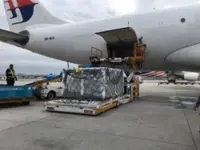Delbir Singh (in white) with the Rela team at Sungai Buloh Hospital, about to bring the food packets into the building. Photos: Jesvinder Singh
For IT service delivery manager Jesvinder Singh, 51, helping others is all about “the value of life”.
“When some of my fellow villagers were infected with Covid-19, my friends and I decided to do something to help them, ” says Jesvinder, from Kalumpang, Hulu Selangor, a village on the border between Selangor and Perak, 80km from Kuala Lumpur.
Already a subscriber? Log in
Save 30% OFF The Star Digital Access
Cancel anytime. Ad-free. Unlimited access with perks.





